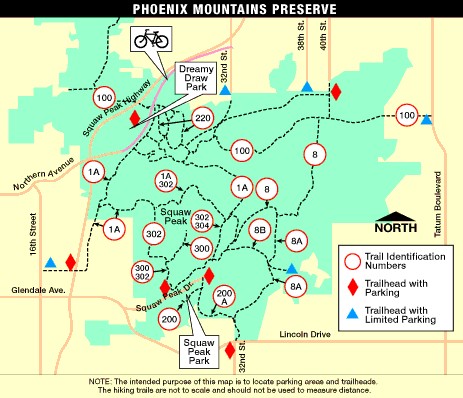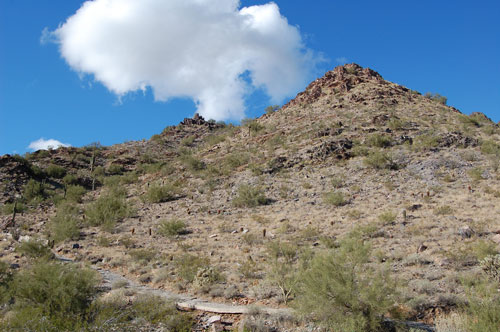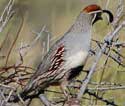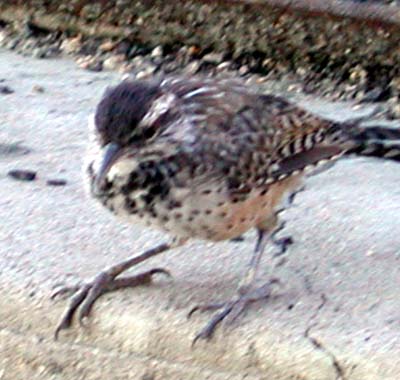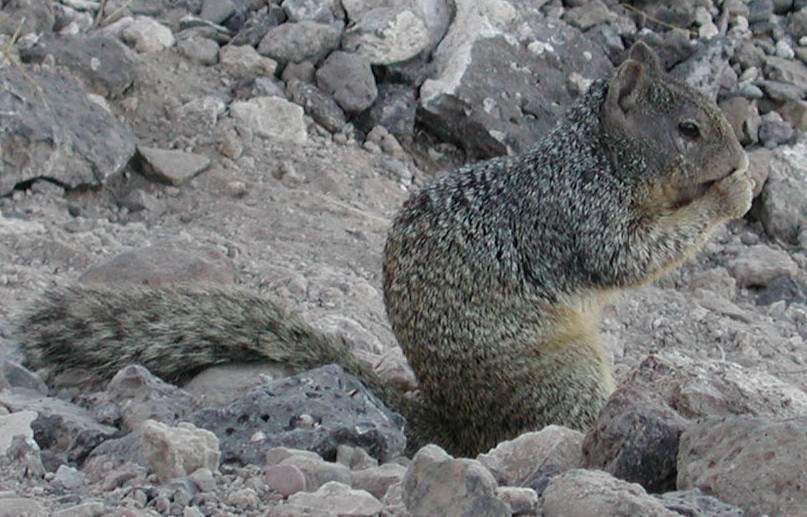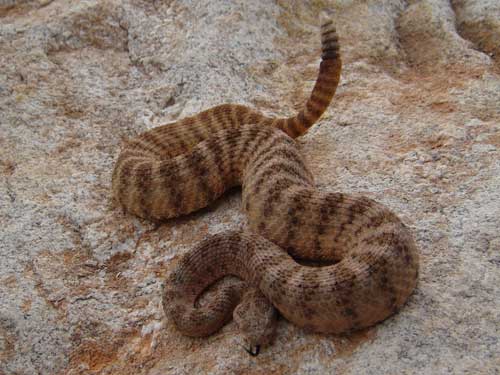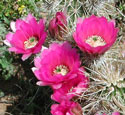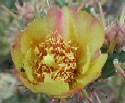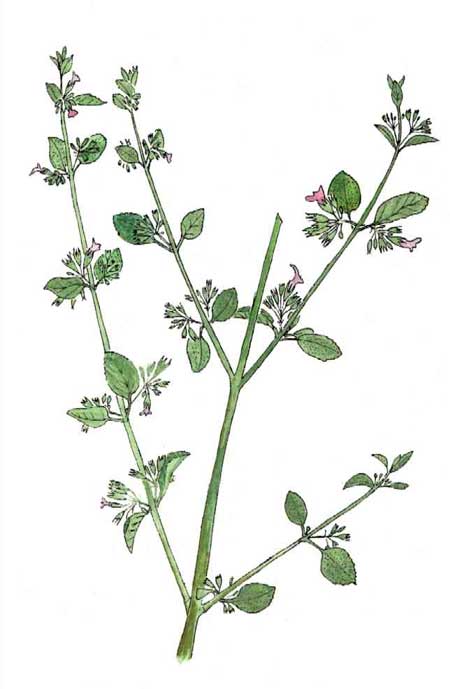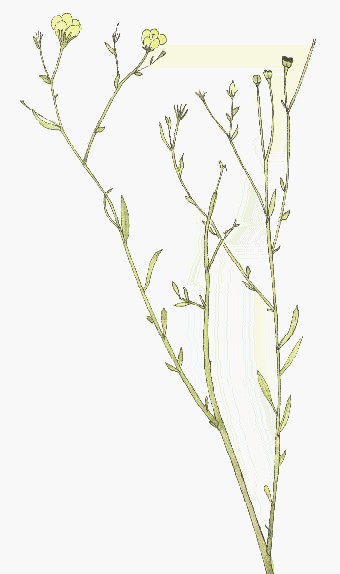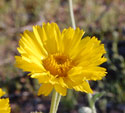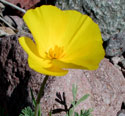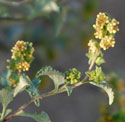|
The year 2002 was among the driest on record in the Phoenix
area, but a wet February changed all that. Carpets of green flanked the slopes
of Piestewa Peak and nearby hills. I identified more than 50 species of
wildflowers in bloom, including California Sun Drops, California Poppies, and
Wild Heliotrope.
Field Trip Report:
Dec. 10, 2000
October's rain followed by a month of spring-like temperatures
has resulted in green desert shrubs and a few early spring wild flowers. I
found Creosote Bush, Trailing Four O'Clock, Desert Poinsettia and Brittle Bush
in bloom. Ocotillos are still fully leaved due to the lack of freezing
temperatures.
I took my hike late in the day as dusk was falling and the
weekend coming to a close. I arrived at a low pass looking west just as the
setting sun had set the horizon ablaze. Rock Wrens, Mockingbirds, and
Curve-billed Thrashers were adding an evening chorus to a very peaceful
setting. But alas a veritable roar could be heard filtering up from the valleys
below. The collective sounds emanated by cars, trucks, heat pumps, slamming
doors and barking dogs. Energy that had fallen on the planet millions of years
ago only to be converted into fossil fuels. Echoes of long gone sunsets.
Field Trip Report:
Oct. 29, 2000
Usually dry, October has been instead very wet. As a result the
desert has greened up considerably. Triangle Leaf Bursage and Brittle Bush are
dense green spheres. Alkali Golden Bush and Desert Senna have added a late
season burst of yellow blooms. Even Foothill Palo Verde and Ocotillo have
flushed new, green growth. Hillsides are developing mats of green algae,
mosses, liverworts, ferns and selaginella.
At the top of a small hill along Trail #220 I sat and ate a
banana. Joining me were a dozen or so butterflies of two kinds: The Gray
Hairstreak and Painted Lady. Also hilltopping were some tachinid flies and a
dragonfly. Most hilltoppers are there for purposes of encountering a member of
the opposite sex. The dragonfly was instead making lunch of the hopeful
suitors.
Field Trip Report:
May 15, 2000
I arrived early to avoid some of the intense mid-day heat that
is already upon us. At 6 AM the temperature was a balmy 25° C, and the
predicted high was 38°. Wildlife is most active early. I observed Audubon's
Cottontail, Rock Squirrels and Harris' Antelope Squirrels. Birds too were
abundant and busy feeding.
Few flowers are left blooming: Trixis, Ocotillo, Brittlebush, Menodora,
and Saguaro Cactus. Swarms of bees and flies were at the saguaro blooms. Birds
too were helping themselves to the nectar including hummingbirds, woodpeckers,
and thrashers. Ocotillo seeds were ripening and becoming food for White-winged
Doves and Harris' Antelope Squirrels. The throaty sound of Ash-throated
Flycatchers were heard in several places.
Many Foothill Palo Verde trees have hundreds of little silken
tents in them, about 3 to 7 cm long. They were spun by the caterpillars of a
pyralid moth. The caterpillars feast on the tiny palo verde leaves before the
plant would shed them anyway in a few weeks. Because the trees will shed these
leaves soon, they do not contain protective phytochemicals, that is, they are
easy for the caterpillars to digest. No harm is done to the trees.
Field Trip Report:
Feb. 22, 1998
A clear sunny day after a week of rather wet weather. Lots of
hikers and strollers out. Almost no parking spaces left. Lots of Gambel's Quail
have move back into the park from the surrounding urban areas where bird lovers
had been keeping them fed through the drought. Now they can dine on much
preferred, tender, nutritious sprouts of wild plants. The wildflowers are just
getting underway. The best place to look now is on the somewhat shady
north-facing slopes. This is because the dry January gave plants in this
moister habitat a boost. The rest should be blooming profusely in a few weeks.
There are lots of poppy seedlings coming up. Barring a hot dry March, the show
should be wonderful and last until April.
Field Trip Report:
Jan. 4, 1998
A beautiful Sunday, late in the afternoon, on a whim, I decided
to drive on over to Piestewa Peak Park proper and hike around a bit. I almost
struck out though because the entire park was jam-packed with citizens out for
a day's hike. Only by pure luck was I successful in finding a parking spot
among several hundred other cars already there. A steady stream of hikers was
moving up and down Piestewa Peak on the partially paved trail. If you have
never done this hike before, the difficulty may surprise you. And the many
people who use this as their daily work out will embarrass you as they rush
past.
If you choose to take a more leisurely hike you will be able to
see some characteristic shrubs and cacti while you get your workout. Two
species of spring wild flowers already are open: Brittle Bush and Sweet Bush.
Several Trailing Four O' Clock had flower buds that should be open very soon.
Pincushion Cactus is notedly common on this peak and was conspicuous because of
the small, bright red fruits.
With so much foot traffic it's not surprising that the path is
very dusty. And what is that dust, laid thick on the trail and powder coating
the shrubs and nearby boulders? Try in good part pulverized rock. But this
mountain is composed of tough, solid gneiss and schist that exacts a toll from
shoes. So there must be leather and "man made materials from China" in the dust
as well. And the thousands of hikers certainly shed fibrous dusts of cotton,
spandex and polyester from their clothing. And don't forget to add bits of
skin, dried droplets of sweat and spit and you've got a brew sure to create
havoc in your lungs as it gets kicked up and you inhale it deeply.
Field Trip Report:
Dec. 25, 1997
Today I entered the park from Dreamy Draw, following trail #100
east from the parking area, then on to the #1 Equestrian Trail. Wow. It's
actually turned a bit chilly here in Phoenix. Yesterday some ice pellets even
fell in a few spots around town. Typically our coldest weather comes very close
to the solstice. With several days of good amounts of rain so far in December,
next spring is shaping up to be a good year for wildflowers. Some are already
sprouting up! Like Bluedicks, Dichelostemma pulchellum, which appear as
reddish-green blades. These members of the lily family grow from underground
bulbs and will have many blue-purple flowers come February.
A beautiful green lawn of Selaginella is springing to life on all the
north facing slopes. A moss-like plant, it curls up brown and dormant through
drought, then regenerates quickly with rain. Other true mosses and crusts of
algae are making the soil itself verdant. I'm always amazed at how fast life
returns to the desert. Further up the trail there are even liverworts growing
on exposed damp soil. The flat finger-like blades grow prostrate to the soil.
Because these primitive plants lack vascular tissue they cannot conduct water
more than a few millimeters... they must be in direct contact with moist soil
at all times. A plant, so dependant on water, flourishes on this desert
mountain. In the shade of the most vertical slope look for the tough and
beautiful Cheilanthes ferns.
|
Sponsored Links
Gray Hairstreak (Strymon melinus)
Bruce Walsh' Butterflies of Southeast Arizona
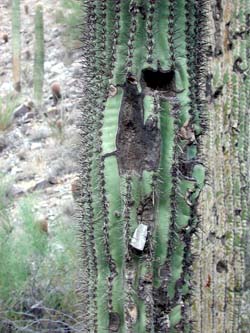
This 100+ year old saguaro grows near a hiking trail and so is
subject to pelting rocks from vandals. The injuries destroy a portion of the
cactus' photosynthetic surface, offer routes for fatal infections, and turn a
stately beauty unsightly. Hard to fathom why. There is a folklore story of a
man living near Tucson who began firing his shot gun repeatedly at a saguaro.
He got quite close and fired again, felling the cactus upon himself. Few lament
the vandal's demise.
Gambel's Quail
|
